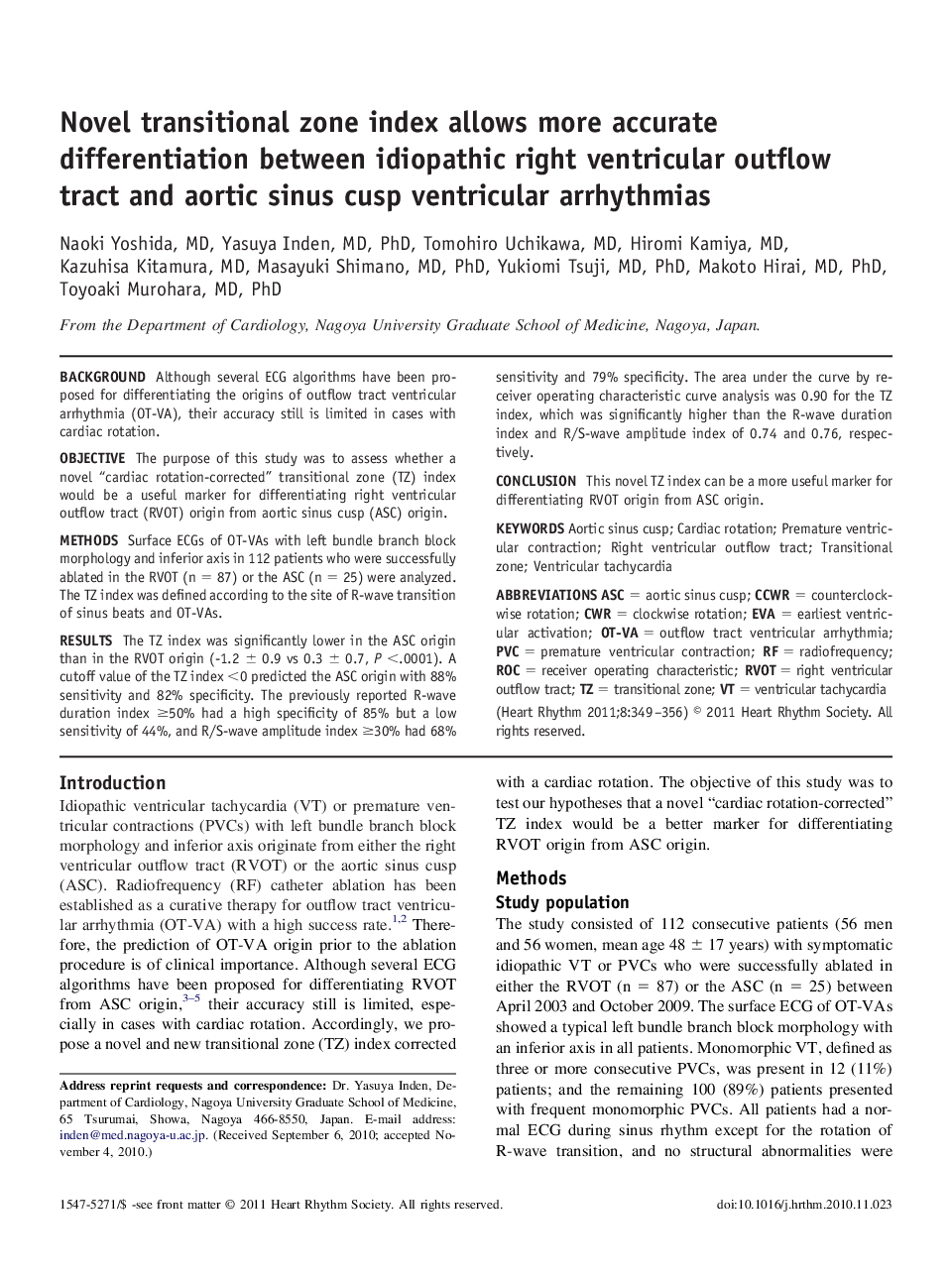| Article ID | Journal | Published Year | Pages | File Type |
|---|---|---|---|---|
| 2923597 | Heart Rhythm | 2011 | 8 Pages |
BackgroundAlthough several ECG algorithms have been proposed for differentiating the origins of outflow tract ventricular arrhythmia (OT-VA), their accuracy still is limited in cases with cardiac rotation.ObjectiveThe purpose of this study was to assess whether a novel “cardiac rotation-corrected” transitional zone (TZ) index would be a useful marker for differentiating right ventricular outflow tract (RVOT) origin from aortic sinus cusp (ASC) origin.MethodsSurface ECGs of OT-VAs with left bundle branch block morphology and inferior axis in 112 patients who were successfully ablated in the RVOT (n = 87) or the ASC (n = 25) were analyzed. The TZ index was defined according to the site of R-wave transition of sinus beats and OT-VAs.ResultsThe TZ index was significantly lower in the ASC origin than in the RVOT origin (-1.2 ± 0.9 vs 0.3 ± 0.7, P <.0001). A cutoff value of the TZ index <0 predicted the ASC origin with 88% sensitivity and 82% specificity. The previously reported R-wave duration index ≥50% had a high specificity of 85% but a low sensitivity of 44%, and R/S-wave amplitude index ≥30% had 68% sensitivity and 79% specificity. The area under the curve by receiver operating characteristic curve analysis was 0.90 for the TZ index, which was significantly higher than the R-wave duration index and R/S-wave amplitude index of 0.74 and 0.76, respectively.ConclusionThis novel TZ index can be a more useful marker for differentiating RVOT origin from ASC origin.
